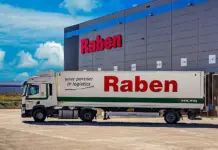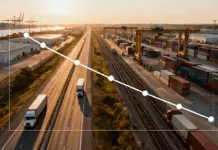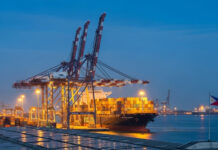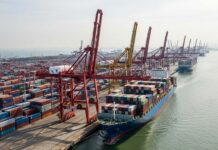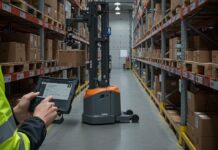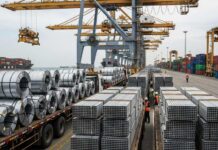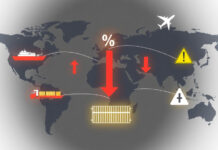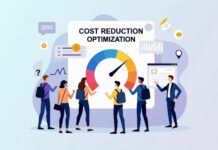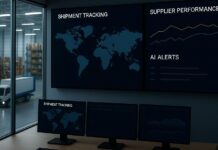The global supply chain, which already happened to be under strain due to disruptions as well as political alterations, faces yet another challenge, and that is in the form of high tariffs. In this ever-evolving commercial spectrum, one of the recent surveys puts forth a notable shift in strategy among the supply chain executives – prioritising the passing of expenses to customers as a primary response when it came to elevated tariffs. With this kind of tariff burden strategy shift gaining momentum, the findings of the survey go on to reflect a very broad revaluation of how businesses can go ahead and tackle financial issues in an increasingly volatile trade spectrum.
Let us look into the context behind this strategy, its outcomes for stakeholders, and initiatives that are being followed throughout the industry.
The industry context is driven by tariff
It is well to be noted that tariffs have long been instruments when it comes to economic policy. However, their wide application in recent years has broadened pressures on global trade. Historically, businesses absorb tariff-related expenses or seek to optimize the supply chain when it comes to gaining efficiency.
But as the costs escalate and customers’ anticipations shift, companies are compelled to discover novel solutions – the main one among them is a shift towards re-allocating financial burden directly to the consumers.
As per the recent industry reports, the major concern driving this is the tariff burden strategy shift, which is rising expenses that stem from tariff hikes. Almost half of the surveyed supply chain leaders now go on to favor transferring the rising costs to customers over other approaches. Moreover, issues about dwindling consumer demand, along with global trade retaliation, highlight the complex balancing act that the businesses must navigate.
The recent trends and developments
Supply chain decision makers have increasingly adopted pricing-based strategies in order to address pricing-related issues. While the direct transfer when it comes to costs to customers remains a major approach, industry leaders are also complementing it with certain other tactics. Strategies that are alternate include renegotiations with supplier contracts, revaluation of trade management processes, and fostering deeper collaborations in order to reduce friction at certain major touchpoints.
It is worth noting that a rising number of enterprises are looking for preemptive measures like pulling the inventory forward in order to hedge future tariff hikes. This kind of agility demonstrates that though the passing costs to customers might as well dominate the narrative, it is often teamed with a broad operational shift, which is aimed at long-term resilience.
Insights on technology and innovation
The tariff burden strategy shift has also gone on to drive investments within advanced technologies, which happen to elevate supply chain agility along with its efficiency. Digital tools, which range from predictive analytics to AI-powered management foundations, help organizations to get through the complexities when it comes to tariff management with much greater precision. For example, machine learning models can offer varied tariff scenarios, thereby empowering the companies to predict and lessen the cost spikes.
In addition to this, blockchain technology is yet another tool that is gaining adoption throughout industries. By way of promoting transparency and helping streamline data sharing through supply chain networks, businesses are enabled to decrease their dependency on intermediaries, build resilience against the tariff-induced price alterations, and lower the costs. This kind of innovation highlights the technology’s role in terms of equipping organizations so as to meet the evolving burden.
Major stakeholders along with their roles
It is well to be noted that the changes in tariff strategies go on to impact a broad spectrum of stakeholders. Right from suppliers who negotiate revised terms to the retailers adjusting their pricing structures, partnership remains an integral part in order to address tariff-related uncertainties.
Quantifying the impact by way of data and forecasts
Financial implications when it comes to increased tariffs Ripples throughout the industries, specifically in sectors like consumer electronics, retail, and automotive. For companies that adopted the strategy shift, maintaining an equilibrium between customer retention and profitability crops up as a major concern. While there are higher costs that can easily erode market share in this cost-sensitive segment, the decision to pass the costs may ultimately throttle a demand shift towards value-oriented offerings.
The survey findings also reveal that 75% of the respondents identify slowing demand as a byproduct of tariffs, thereby further restricting the very slim interplay between market dynamics and pricing decisions. These kinds of trends force the significance of proactive planning in order to lessen the ripple effects.
Challenges along with opportunities
Transferring costs to the customer, which is a part of the tariff burden strategy shift, goes on to present challenges and, along with them, opportunities. On the one hand, price-sensitive consumers may as well resist paying more, specifically in markets that are competitive where affordability drives the purchase decision. Businesses that face these risks not only lose market share but also, at the same time, damage long-standing consumer loyalty.
This strategy goes on to open the doors for organizations in order to engage in very transparent communication with their customers. By way of clearly articulating the economic realities that are behind pricing shifts, businesses can go on to foster faith and also encourage understanding between the audience. Moreover, firms that happen to invest in regional production or the ones that adopt sustainable practices in order to offset tariff-related expenses may as well find themselves in a very good position in order to capture the emerging opportunities in markets that are very social and environmentally conscious.
Tesla and Apple have already demonstrated the efficacy when it comes to balancing price alterations along with value-driven narratives. The success stories underscore how innovatively executed strategies can go on to drive resilience while at the same time reinforcing the brand’s positioning.
Future Outlook
As businesses pass through this period of substantial change, resilience as well as adaptability will become major differentiators within the market. The upcoming Gartner supply chain symposium, which is scheduled for May 2025, goes on to serve as a very important platform when it comes to knowledge exchange by offering insights into cutting-edge practices so as to overcome tariff challenges. Marching forward, the effectiveness when it comes to tariff and strategy shift will completely depend on organizations’ ability to mix immediate cost-passing measures along with long-term investments in technology, supply chain optimization, and strategic diversification. While transferring the cost to consumers may offer a very short-term relief, companies that are positioned to innovate as well as scale under the evolving tariff conditions will go on to gain competitive benefits.
Conclusion
The rising privilege when it comes to the tariff burden and strategy shift marks a very important moment as far as broader evolution of global supply chains is concerned. By shifting towards pricing adjustments while at the same time leveraging the tech and fostering partnership, supply chain leaders are indeed charting a very practical path forward. At the end of the day, as the industry embraces high tariffs, the choices that are made today will always influence consumer relationships, operational efficiency, and market dynamics for years to come. Organizations that are resilient and those that approach these burdens with a mix of strategic foresight along with operational agility are all set to speed up in an era that is defined by disruption as well as transformation.

